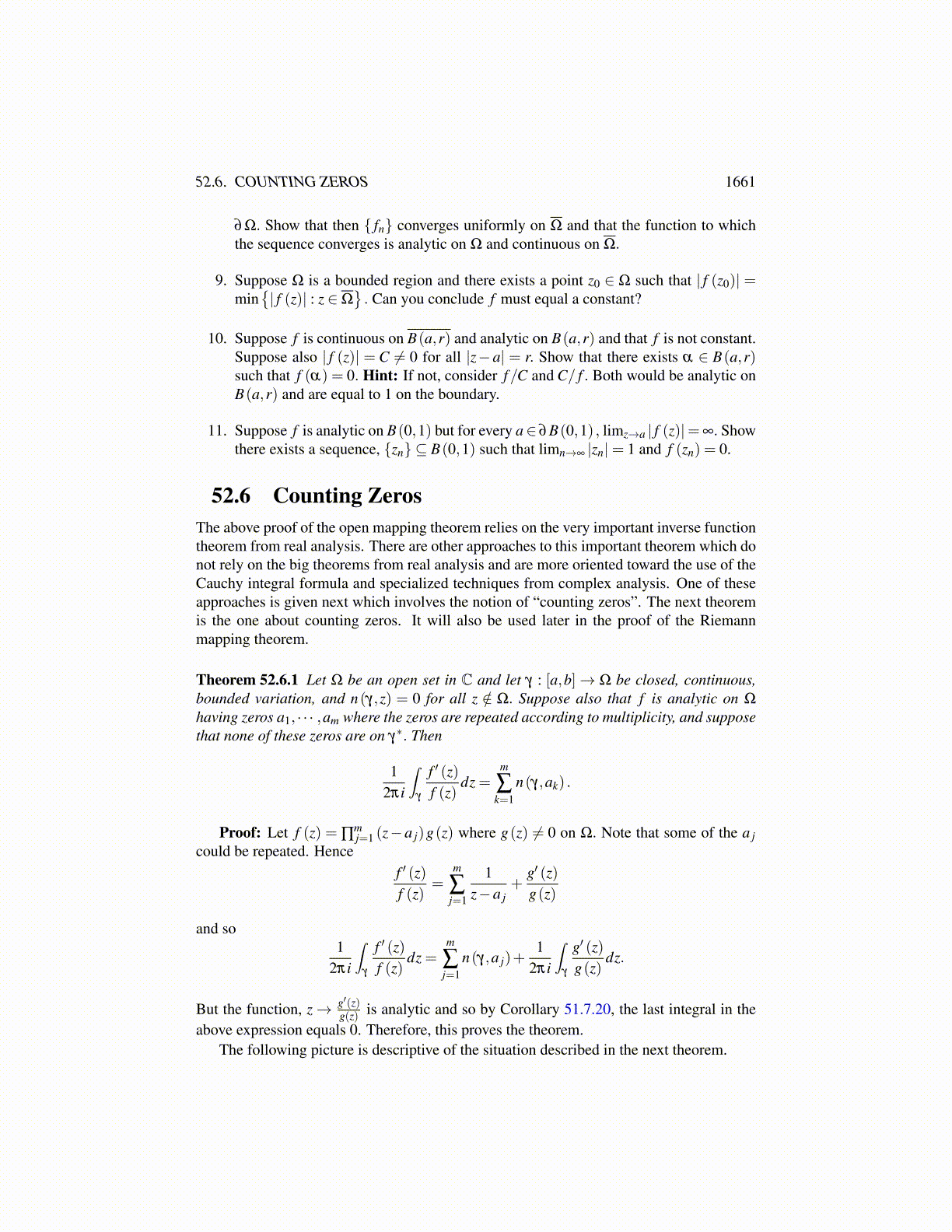
52.4. EXTENSIONS OF MAXIMUM MODULUS THEOREM 1661
Proof: First of all, for |z|< 1/ |α| ,
φ α ◦φ−α (z)≡( z+α
1+αz
)−α
1−α( z+α
1+αz
) = z
after a few computations. If I show that φ α maps B(0,1) to B(0,1) for all |α|< 1, this willhave shown that φ α is one to one and onto B(0,1).
Consider∣∣φ α
(eiθ)∣∣ . This yields∣∣∣∣ eiθ −α
1−αeiθ
∣∣∣∣= ∣∣∣∣1−αe−iθ
1−αeiθ
∣∣∣∣= 1
where the first equality is obtained by multiplying by∣∣e−iθ
∣∣ = 1. Therefore, φ α maps∂B(0,1) one to one and onto ∂B(0,1) . Now notice that φ α is analytic on B(0,1) becausethe only singularity, a pole is at z = 1/α . By the maximum modulus theorem, it follows
|φ α (z)|< 1
whenever |z|< 1. The same is true of φ−α .It only remains to verify the assertions about the derivatives. Long division gives
φ α (z) = (−α)−1 +(−α+(α)−1
1−αz
)and so
φ′α (z) = (−1)(1−αz)−2
(−α +(α)−1
)(−α)
= α (1−αz)−2(−α +(α)−1
)= (1−αz)−2
(−|α|2 +1
)Hence the two formulas follow. This proves the lemma.
One reason these mappings are so important is the following theorem.
Theorem 52.4.8 Suppose f is an analytic function defined on B(0,1) and f maps B(0,1)one to one and onto B(0,1) . Then there exists θ such that
f (z) = eiθφ α (z)
for some α ∈ B(0,1) .
Proof: Let f (α)= 0. Then h(z)≡ f ◦φ−α (z) maps B(0,1) one to one and onto B(0,1)and has the property that h(0) = 0. Therefore, by the Schwarz lemma,
|h(z)| ≤ |z| .
but it is also the case that h−1 (0) = 0 and h−1 maps B(0,1) to B(0,1). Therefore, the sameinequality holds for h−1. Therefore,
|z|=∣∣h−1 (h(z))
∣∣≤ |h(z)|and so |h(z)| = |z| . By the Schwarz lemma again, h(z) ≡ f
(φ−α (z)
)= eiθ z. Letting z =
φ α , you get f (z) = eiθ φ α (z).